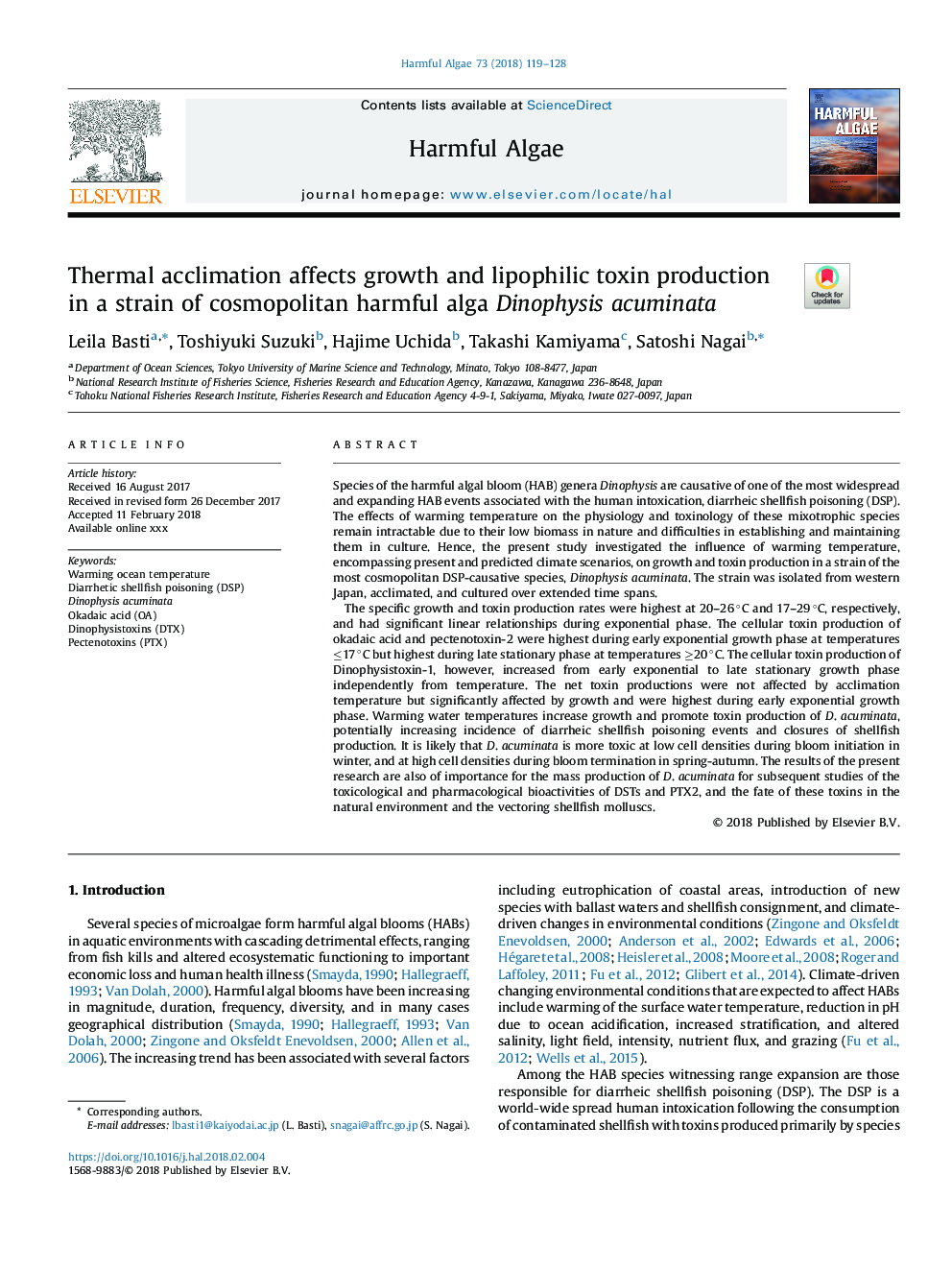| Article ID | Journal | Published Year | Pages | File Type |
|---|---|---|---|---|
| 8885696 | Harmful Algae | 2018 | 10 Pages |
Abstract
The specific growth and toxin production rates were highest at 20-26â¯Â°C and 17-29â¯Â°C, respectively, and had significant linear relationships during exponential phase. The cellular toxin production of okadaic acid and pectenotoxin-2 were highest during early exponential growth phase at temperatures â¤17â¯Â°C but highest during late stationary phase at temperatures â¥20â¯Â°C. The cellular toxin production of Dinophysistoxin-1, however, increased from early exponential to late stationary growth phase independently from temperature. The net toxin productions were not affected by acclimation temperature but significantly affected by growth and were highest during early exponential growth phase. Warming water temperatures increase growth and promote toxin production of D. acuminata, potentially increasing incidence of diarrheic shellfish poisoning events and closures of shellfish production. It is likely that D. acuminata is more toxic at low cell densities during bloom initiation in winter, and at high cell densities during bloom termination in spring-autumn. The results of the present research are also of importance for the mass production of D. acuminata for subsequent studies of the toxicological and pharmacological bioactivities of DSTs and PTX2, and the fate of these toxins in the natural environment and the vectoring shellfish molluscs.
Related Topics
Life Sciences
Agricultural and Biological Sciences
Aquatic Science
Authors
Leila Basti, Toshiyuki Suzuki, Hajime Uchida, Takashi Kamiyama, Satoshi Nagai,
